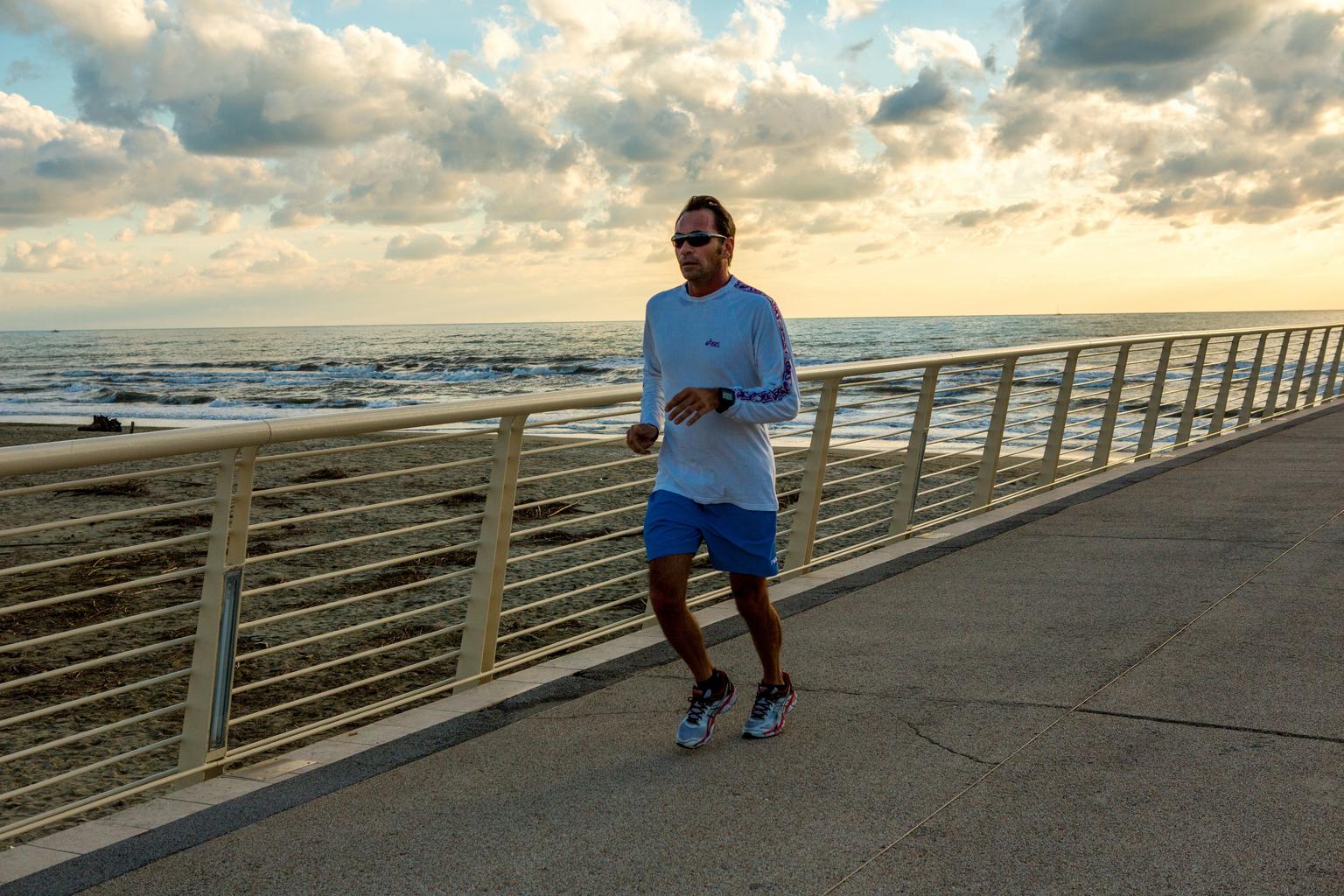
I've found over the years that the more I try to live the example of health and happiness, the more I'm able to communicate my methods. And so, while training for my second marathon, I decided to build a meditation practice into my runs.
It was an experiment, but it has changed my life and my running. I call this meditation practice "Immanent Meditation" (I.M. for short), the goal of which is to offer much needed perspective and balance. I see it as a way to attain a clearer, calmer mind in today’s world. I found this helpful when combined with running, but with practice, it can be applied to just about any activity — even in weightlifting, spin classes, swimming, biking, or Pilates, you can apply these same I.M. techniques.
Next time you exercise, give it a try. Here's how:
1. Begin with small steps.
Avoid the pressure of "meditating the whole time" or "keeping your mind completely clear." I.M. is about simply noticing what's happening around you in any moment, without judgment.
Pushing hard to increase the time you spend practicing I.M. runs counter to the practice itself, which is about being calm and aware in the moment. Your mind will inevitably drift into thoughts, and when you realize this, start listening/watching/feeling again.
2. Notice physical feelings.
Observe any tightness in your muscles, joint stiffness, euphoria, or mouth-dryness. Pay attention to sensations of cold, wet, dry, or heat.
3. Notice any muscles that are tense, and just feel them more fully.
What does the tension really feel like?
4. Listen for any sounds you hear.
Do you hear your breath, birds, wind, cars, dogs barking, loud music, the instructor, water rushing by as you swim?
5. Look at your surroundings.
What do you see? Trees, dirt, buildings, people in your class, yoga mats, a stationary bike, a weight machine?
6. Delay your devices for a minute or two.
If you prefer listening to music or podcasts during your exercise, try delaying starting your device for a minute or two, or shut off the iPod for a couple of minutes before finishing your exercise, and take notice of everything (or anything listed above). Look at it like you’re “getting your bearings” or “getting grounded.”
7. If you’re a runner or walker, try hitting a trail or uneven surface.
Notice how much more you naturally and effortlessly pay attention as you read the terrain. Notice how quickly you become present as you encounter a hole, stick, ditch, or even broken glass. Living in the wild, our survival required us to pay attention and be present — noticing food, escaping predators, and avoiding the always embarrassing/entertaining pratfall.
I.M. is about using your senses more fully. Hearing more, seeing more, feeling more, tasting more etc. The message you send yourself by practicing I.M. is to live life more fully.
The more you practice, the more you’ll notice how I.M. positively affects your work, family life, and friendships. Are you more present in everyday life? Are you getting more out of your experiences because you're more fully engaged in them?
What I’ve learned by becoming more present during exercise:
1. That being aware is a natural state for the human being, and life is more fulfilling when we're in this state.
2. That I was holding muscle tension I previously did not notice. While running, I found that I tense up muscles in my upper body, neck and face, but now am more aware of this and can relax these muscles periodically throughout my runs.
3. That during my speed workouts, I am more relaxed and can run faster with less stress. My body becomes more fluid and loose, minimizing the chances of pulled muscles/injuries.
4. That during my slow, long runs, I am able to keep myself from going too fast. I’ve learned how to slow down when necessary, a good lesson of balance in the modern world.
5. That I.M. reaches far beyond any exercise and is essentially a way to come into the world each day, with choices instead of obligations; with actions instead of reactions.

No comments:
Post a Comment